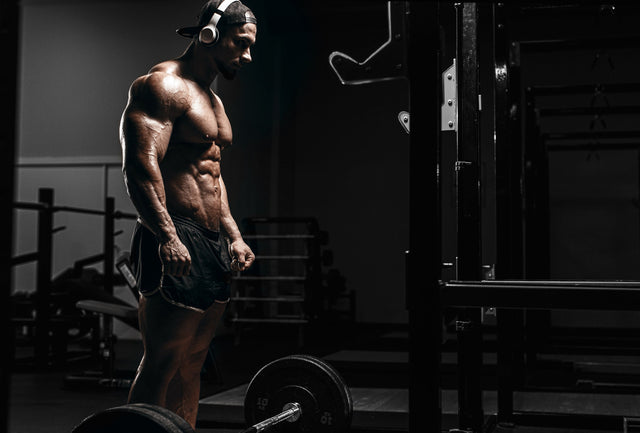Stepping into the gym for the first time—or after a long hiatus—can feel overwhelming, especially without a clear training program. With dozens of machines, racks of free weights, and endless social media tips, it’s hard to know what’s best for your goals.
Should you prioritize free weights like barbells and dumbbells? Or stick with weight machines for more control and safety? Here’s how to make the smartest decision for your training, backed by science and real-world results.
What Are Free Weights?
Free weights include:
-
Dumbbells
-
Barbells
-
Kettlebells
-
Weighted vests
Free weights allow you to move freely in space, requiring balance, coordination, and full-body muscle engagement. They’re often used in compound lifts like squats, deadlifts, bench presses, and overhead presses.
"Free-weight exercises that stimulate multiple muscle groups simultaneously—such as squats and deadlifts—produce greater increases in testosterone, strength, and lean mass." – Shane R. Schwanbeck, Journal of Strength and Conditioning Research
What Are Weight Machines?
Weight machines are fixed-path training tools designed for muscle isolation. They remove the need for balance or stabilization and allow you to focus solely on movement execution and tension.
Examples:
-
Leg extension
-
Chest press
-
Preacher curl
-
Lat pulldown
-
Cable machines
"Machines provide more stable environments, allowing isolation and contraction of a specific muscle group to accelerate hypertrophy." – Rafael F. Escamilla, Sports Medicine
Benefits of Free Weights
Free weights are widely used because they offer the most neuromuscular activation, adaptability, and functional strength development.
1. Greater Muscle Activation
Free weights engage not only prime movers but also stabilizers, core, and smaller muscle groups.
"Training with free weights results in greater recruitment of trunk and limb musculature compared to machine-based exercises." – Lars L. Andersen, Scandinavian Journal of Medicine & Science in Sports
2. Functional Strength Transfer
Movements like deadlifts and squats mimic real-life physical demands. Free weights improve athletic performance, mobility, and balance.
3. Increased Core Engagement
Almost every free weight exercise activates your core, improving overall strength and reducing risk of injury.
4. Better Range of Motion and Joint Health
Free weights allow you to move through a natural path of motion, adapting to your body mechanics and promoting mobility.
5. Stronger Hormonal Response
Free-weight compound lifts significantly raise testosterone, growth hormone, and IGF-1, key to building size and strength.
6. Scalability Across All Levels
Progress is linear and measurable. From goblet squats to 500-lb deadlifts, free weights scale with you for life.
7. Cost and Space Efficiency (Home Training)
Adjustable dumbbells or kettlebells take up less space than an entire multi-station machine setup.
Benefits of Weight Machines
Machines aren’t “bad”—in fact, they’re often essential for beginners, rehab, or isolation training.
1. Precise Muscle Isolation
Machines allow for laser-focused work on muscles like biceps, quads, or lats without relying on secondary stabilizers.
2. Lower Learning Curve
Great for beginners or those returning from a layoff. Machines simplify movement patterns and reduce the margin for error.
3. Safe High-Volume Training
Machines enable drop sets, super sets, and training to failure with less injury risk, making them ideal for hypertrophy.
4. Consistent Resistance
Pulleys, cams, or hydraulics match the muscle’s strength curve, maximizing tension and time under load.
5. Rehabilitation & Recovery
Machines let you train around injuries while still activating and strengthening specific areas under supervision.
6. Improved Mind-Muscle Connection
No need to worry about balance—you can focus 100% on contraction and squeeze, which is crucial for physique development.
"Machine-based training can be particularly effective for hypertrophy when combined with appropriate volume and effort." – Brad J. Schoenfeld, Journal of Strength and Conditioning Research
Free Weights vs. Machines: Key Differences
| Factor | Free Weights | Machines |
|---|---|---|
| Muscle Activation | High — full-body engagement | Targeted — isolates specific muscles |
| Functional Strength | Excellent for real-world movements | Limited to linear planes of motion |
| Learning Curve | Higher — requires form mastery | Lower — fixed path reduces errors |
| Progressive Overload | Highly adaptable | Easy to track and scale with pin weight |
| Injury Rehab | Moderate support for rehab | Excellent for recovery and return to training |
| Hypertrophy Focus | Effective, especially in compound lifts | Ideal for isolating lagging muscles |
When to Use Machines vs. Free Weights
Use Free Weights When:
-
You want to build foundational strength
-
You’re training for performance or athletic carryover
-
You need to improve coordination and balance
-
You're focusing on multi-joint compound lifts
Use Machines When:
-
You’re new to lifting or rehabbing an injury
-
You want to target a lagging muscle (e.g., biceps, hamstrings)
-
You’re doing high-volume or fatigue-based training
-
You need controlled movements for safety
Sample Push Day Workout: Machines + Free Weights
| Exercise | Type | Focus |
|---|---|---|
| Barbell Bench Press | Free weight | Compound strength |
| Dumbbell Shoulder Press | Free weight | Overhead pressing |
| Machine Chest Fly | Machine | Pec isolation |
| Cable Lateral Raise | Hybrid | Deltoid shaping |
| Tricep Pushdown (Cable) | Machine | Triceps isolation |
| Overhead Dumbbell Extension | Free weight | Triceps stretch/load |
FAQ: Free Weights vs. Machines
Q: Are free weights better than machines for beginners?
Machines are safer early on, but free weights provide long-term benefits when introduced with proper coaching.
Q: Do free weights burn more calories?
Yes. They recruit more total muscle mass, leading to increased energy expenditure per workout.
Q: Can I get ripped using only machines?
Yes—particularly for hypertrophy—but overall strength and function will be limited without free weights.
Q: Are cables free weights or machines?
They’re a hybrid—offering freedom of movement like free weights but guided resistance like machines.
Comparison Table: Free Weights vs. Machines
| Training Tool | Primary Use | Strengths | Limitations |
|---|---|---|---|
| Free Weights | Compound + functional strength | Muscle activation, core engagement, flexibility | Requires balance, higher skill curve |
| Machines | Isolation and rehab | Safe, easy to use, great for hypertrophy | Limited functionality and real-world carryover |
Key Takeaways
-
Free weights are ideal for strength, coordination, and muscle activation
-
Machines are great for isolation, recovery, and safe hypertrophy training
-
A blended approach leads to optimal results in physique, performance, and injury prevention
-
Structure your program based on your goals, level, and training split
"Using free weights compared with more stable machines results in greater muscle activation, particularly in the trunk and lower extremities." – Atle H. Saeterbakken, Journal of Strength and Conditioning Research
Need help creating a program that combines both? Contact The Swole Kitchen for personalized nutrition and training coaching that fits your goals—whether you're chasing strength, size, or aesthetics.
Need Help With Optimizing Your Diet And Nutrition Plan To Finally Get The Results You've Been Waiting For?
SWOLVERINE IS AN ENDURANCE ATHLETE AND ACTIVE LIFESTYLE BRAND. MADE FOR THE ELITE ATHLETE, AND THE STRONG-WILLED OUR PRODUCTS WERE DESIGNED TO FUEL YOUR ATHLETIC PERFORMANCE. WE PERFORM WHEN YOU PERFORM.
We believe that everyone can optimize not only their athletic performance but their human potential. The way we believe we can optimize performance is through transparency, clinically effective doses, and clinically proven ingredients with evidence-based outcomes. We provide the nutrients you need to power your active lifestyle.








